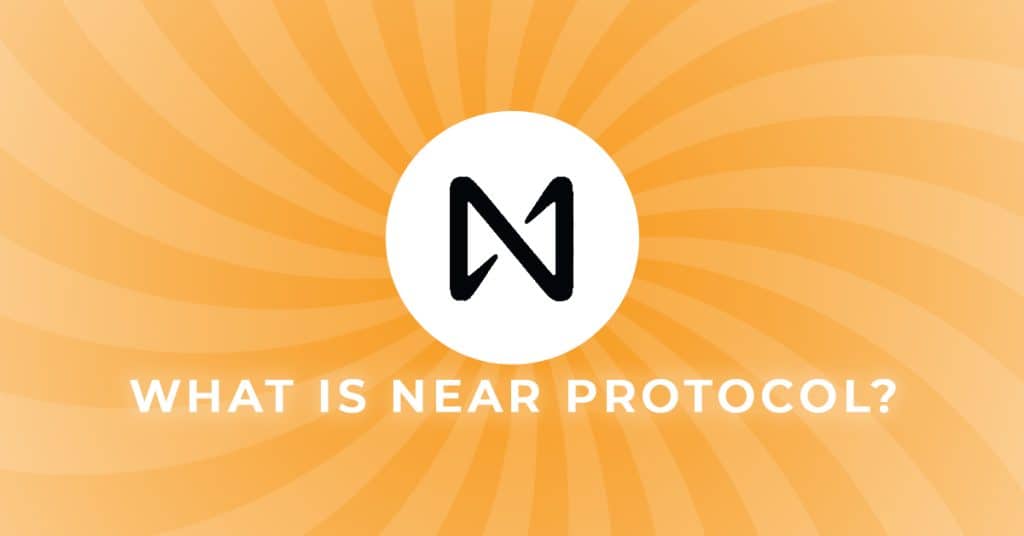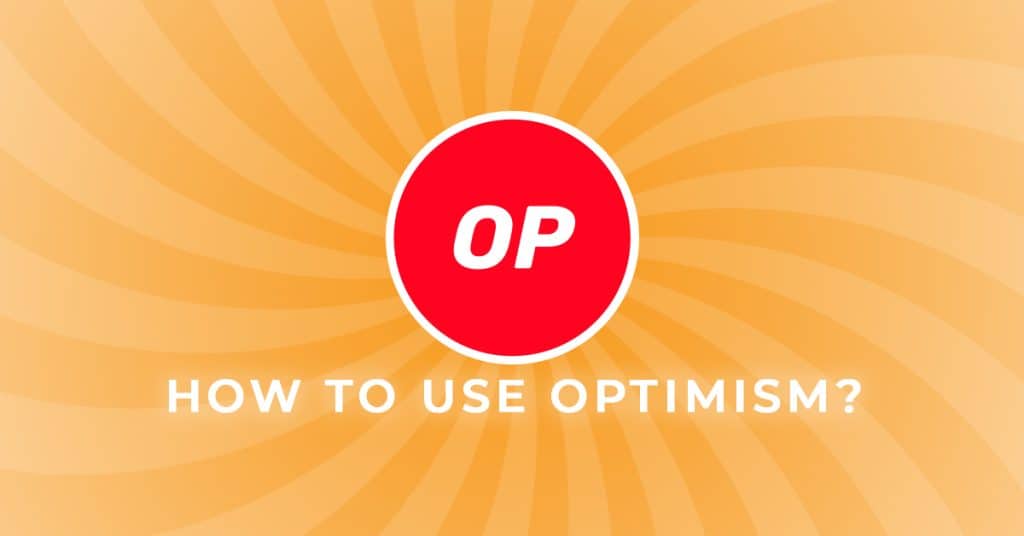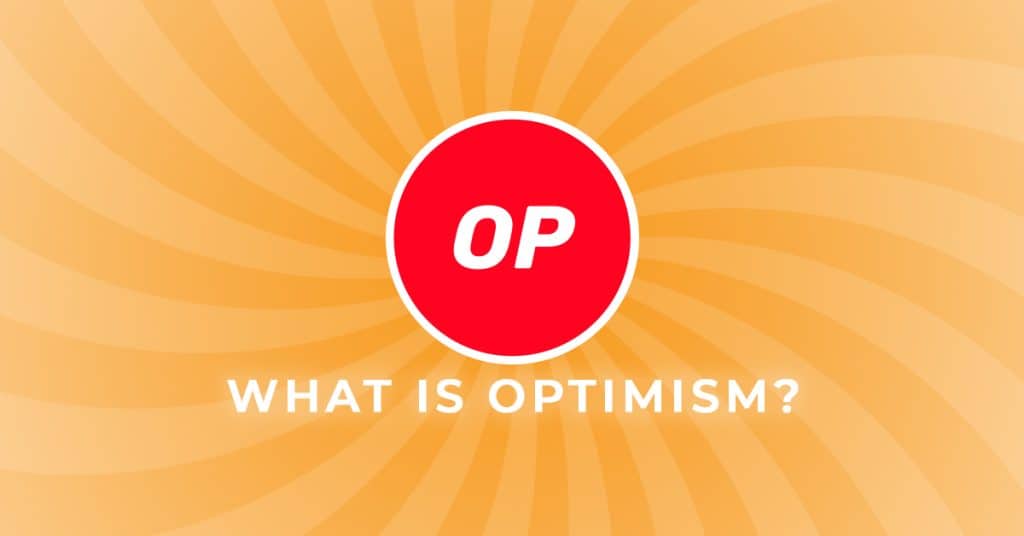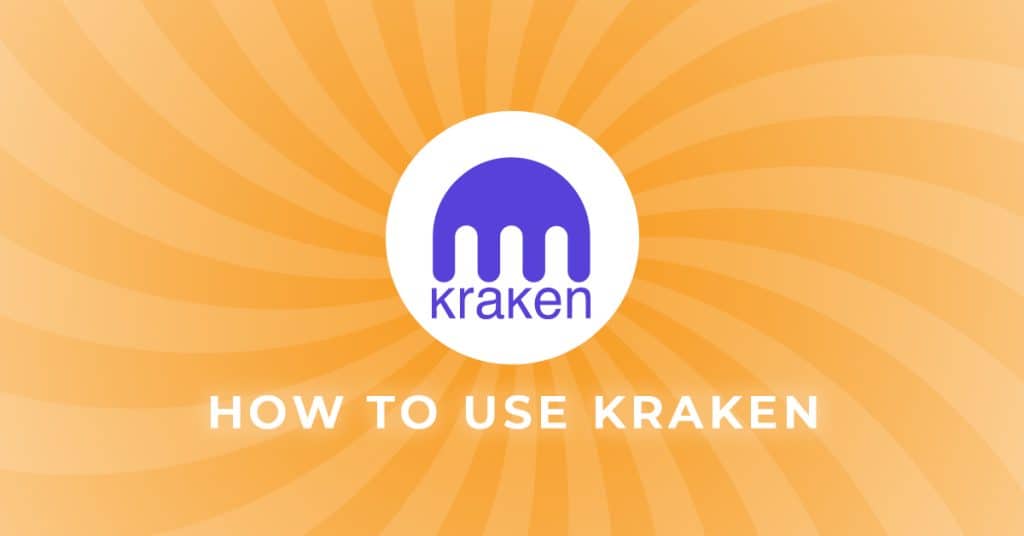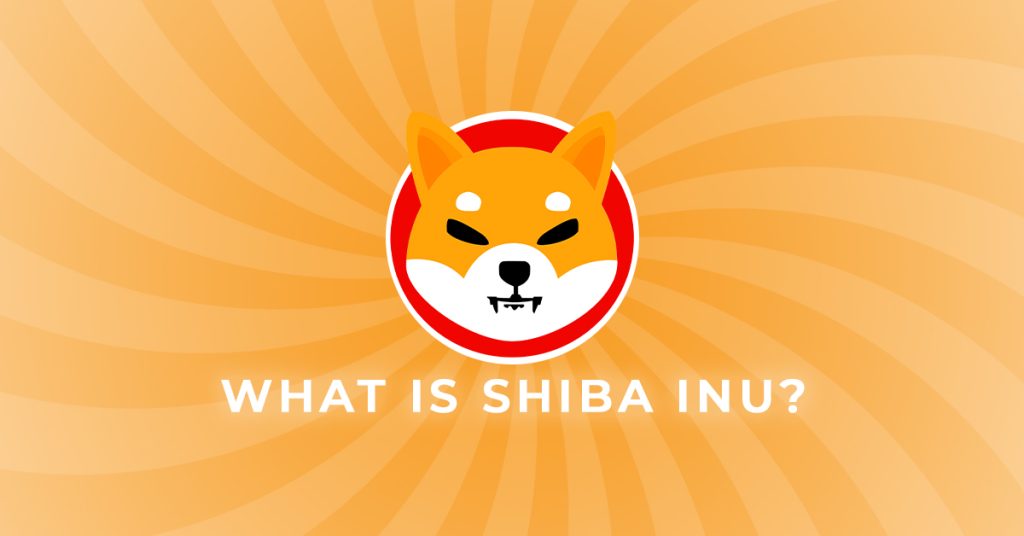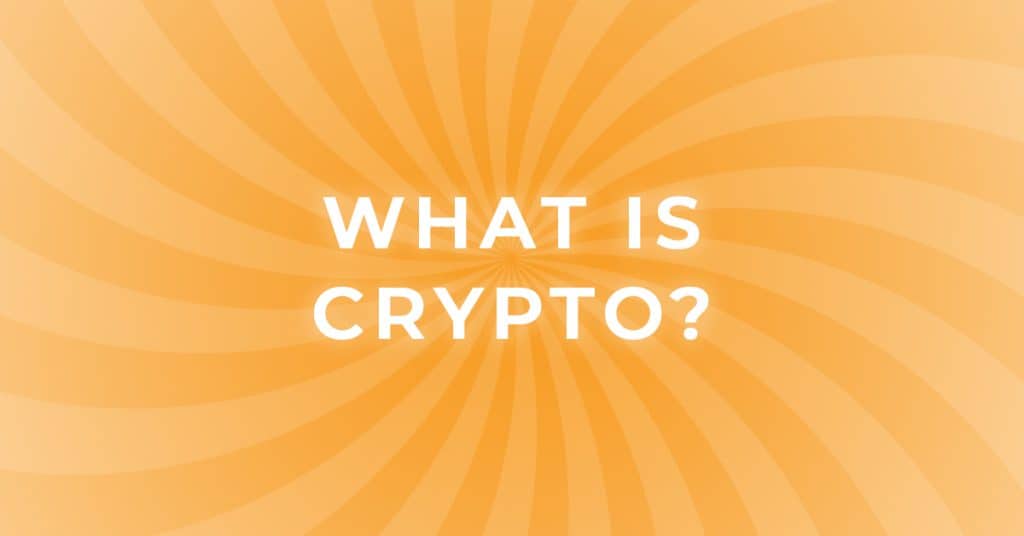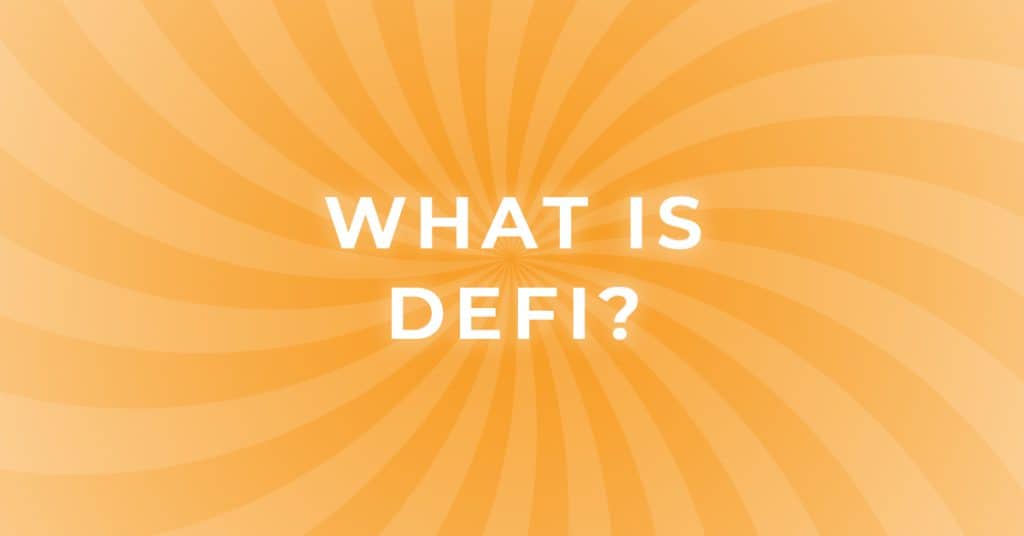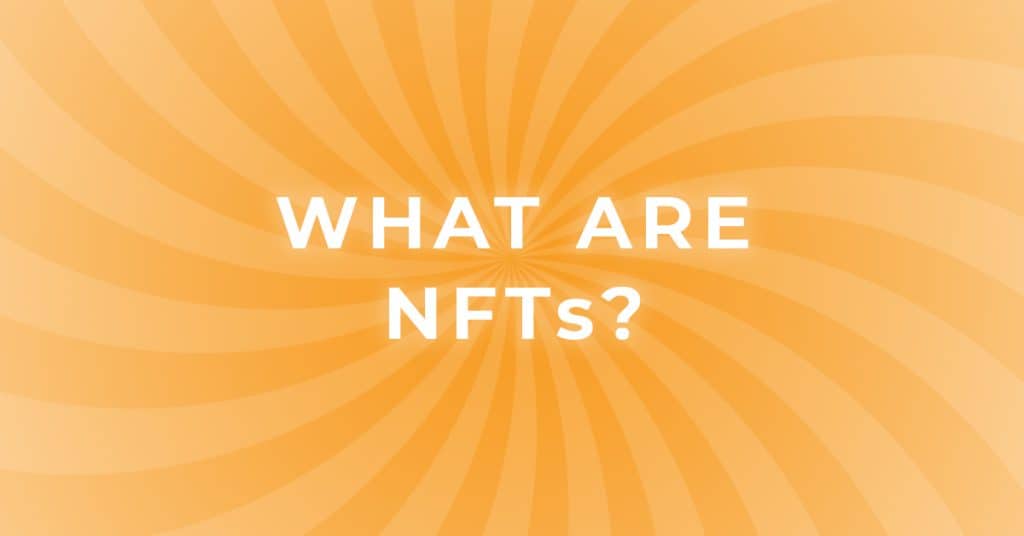What is Tron (TRX)? | Tron Explained for Beginners
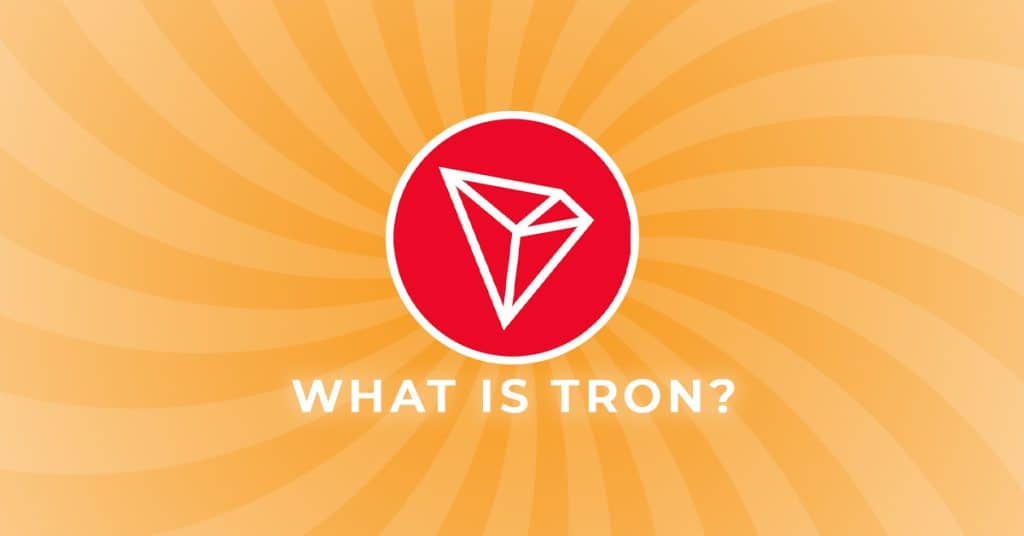
TL;DR
TRON is a smart contracts blockchain founded in 2017 by Chinese tech entrepreneur, Justin Sun. It got its start on the Ethereum network until the TRON mainnet launched in 2018. The TRON blockchain runs on a delegated proof-of-stake consensus (DPoS) mechanism. This gives users who pledge tokens as collateral the right to vote for transaction validators. These are known as Super Representatives.
The blockchain itself was created with two goals in mind: 1. Decentralize the entertainment and content industry and 2. Allow businesses to trade globally using their own crypto tokens that are seamlessly interchangeable with one another via the native token, TRX. Speed and scalability are impressive too. TRON’s block interval is 3 seconds and has the capacity for up to 2,000 transactions per second. It’s a fully decentralized blockchain for content creators and content consumers. TRON has partnered with brands such as Samsung to bring new users into the ecosystem. The TRON foundation has also made a couple of key acquisitions, most notably BitTorrent, the peer-to-peer file-sharing protocol in 2018.
You may be thinking, “TRON? Isn’t that some old-school 80s sci-fi movie? The one with those ghastly glow-in-the-dark suits.” Well, I’m not here to talk about that TRON. So crypto-curious investors, listen up. TRON is a blockchain making moves in the world of entertainment and content. You’re either going to be a content creator, a content consumer, or both. But regardless of which camp you fit into, this blockchain has the potential to revolutionize the entertainment industry.
Let’s dive into what TRON is, how it works, and how the TRON ecosystem has been growing since its inception. This beginner guide will give you the TRON blockchain basics in less than 10 minutes.
What is TRON (TRX)?
The Blockchain
TRON is a smart contracts blockchain founded by Justin Sun, a Chinese tech entrepreneur. He was also the founder of Peiwo app, the Chinese Snapchat, as well as having a history of previously working for Ripple in China. TRX is a cryptocurrency originally launched as an ERC-20 token on the Ethereum blockchain in 2017. The Tron Foundation raised $70M in an Initial Public Offering (ICO) to launch the original version of TRX on Ethereum. TRX migrated to the TRON network shortly after its mainnet launch in 2018.
The Vision
The TRON network aims to reshape the entertainment industry, by moving away from a centralized business model. It’s currently dominated by the likes of YouTube, Spotify, Netflix, and Amazon—all acting as the middlemen. They control how much creators get paid for the content they create. But they also control the algorithms, who is seen and heard, and who isn’t. They get to decide who are the winners and losers—enter TRON.
TRON is designed to help developers create apps and smart contracts to promote content and entertainment. TRON’s mission is to create worldwide free content and entertainment through a decentralized ecosystem. This means content creators will be able to freely own and store their content and control its distribution. Creators will be able to get paid for their content in the TRX token which can be exchanged for any fiat currency at any time. This is one step towards a much bigger goal for the blockchain.
Global interoperability is TRON’s bigger plan. The network plans to shape global communication and trade using blockchain technology. This means companies can create their own cryptocurrency on the TRON network. These new crypto tokens can be used to buy the company’s goods and services, as well as those from any other company in the TRON ecosystem. The TRX token is at the center of the TRON blockchain. TRX can automatically convert these custom company tokens back and forth without the user knowing or needing to own them all.
The TRX token is the native token on the TRON network, so all other TRC-based tokens will use TRX as its gas fees. The TRON network successfully transitioned to full decentralization in December 2021. This means it’s operating purely as a community-governed DAO.
How Does Tron Work?
The DPoS Consensus Mechanism
TRON is a network that runs on a delegated proof-of-stake consensus (DPoS) mechanism. This is a variation of the traditional proof-of-stake (PoS) mechanism you commonly hear of. A blockchain that uses PoS will assign validator rights based on how many tokens a user has pledged as collateral. Whereas DPoS relies on a voting process that allows users to vote for the delegates they want to validate transactions. Users can do this by staking their TRX in a staking pool associated with their preferred delegate. The TRON network calls these delegates “Super Representatives,” and elections are held every 6 hours to elect the 27 chosen delegates. The biggest advantage of DPoS is it provides a fair opportunity for user participation.
The 3-Layer Architecture
The TRON blockchain itself is structured using a three-layer architecture with the following layers:
- a core layer
- a storage layer
- an application layer
Here’s how the three layers work together:
The core layer is the blockchain’s foundation, so it must be strong. It performs fundamental tasks. These tasks include validating transactions, managing accounts, and reading smart contracts. The programming language used for the smart contracts is Solidity – the same used on Ethereum.
The storage layer is optimized for complex data storage requirements. It’s divided up into blockchain storage and state storage. It’s designed to provide the blockchain with stability and security.
The application layer is where shiny new things get built. It’s used by developers for building dApps and wallets and is the layer that users will interact with. With its own built-in smart contract system, it’s a strong base that provides endless opportunities for products and services.
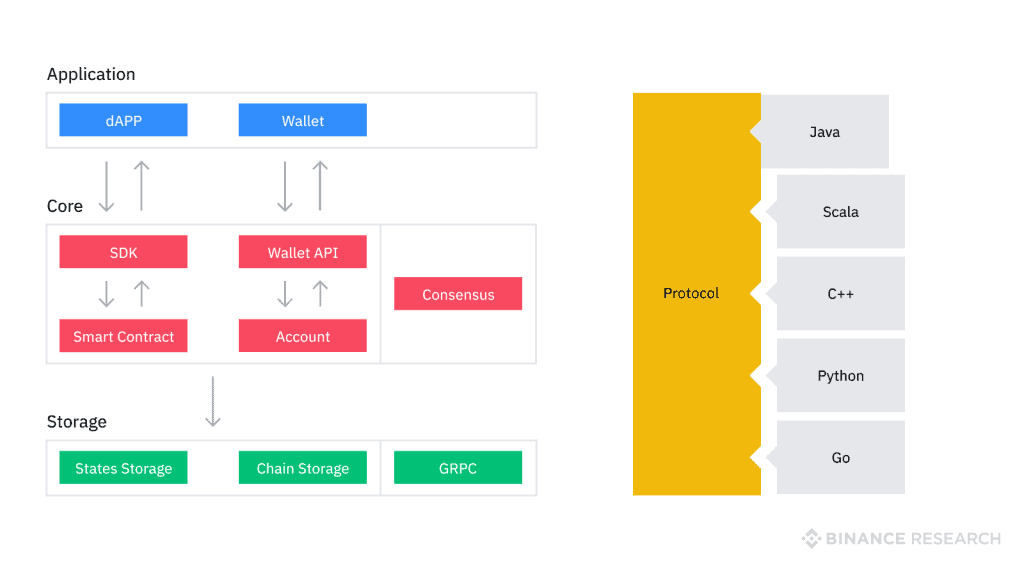
In TRON’s DPoS system, Super Representatives validate blocks of transactions. For each block that gets processed, a super representative gets two types of rewards: a block reward and a vote reward. These are shared among the super representative’s staking pool with the users who voted for them.
TRON has set its block interval to 3 seconds—that’s fast! This means new blocks are added to the blockchain every 3 seconds. The TRON network can also support transactions up to 2,000 per second.
The Virtual Machine
Tron’s Virtual Machine (TVM) was originally created as a fork from Ethereum’s Virtual Machine (EVM). The TVM is designed to facilitate the TRON ecosystem getting bigger and better. It does this by allowing software to plug into the TRON network from other blockchains. As it’s compatible with Ethereum’s Virtual Machine, it enables Ethereum developers to seamlessly port over dApps to TRON. This flexibility for developers opens a whole new world of potential opportunities for TRON in the future.
Tron’s Growth And Ecosystem
The TRON ecosystem has expanded to include DEXs, wallets, oracles, and lending platforms. It has become one of the world’s largest blockchain-based ecosystems. A massive use case for the blockchain is stablecoin transactions. As of 2023, Tether’s USDT stablecoin makes up around 95% of TRON’s stablecoin market cap. TUSD follows behind in second place and USDD, TRON’s algorithmic stablecoin is the third most popular stablecoin on the network.
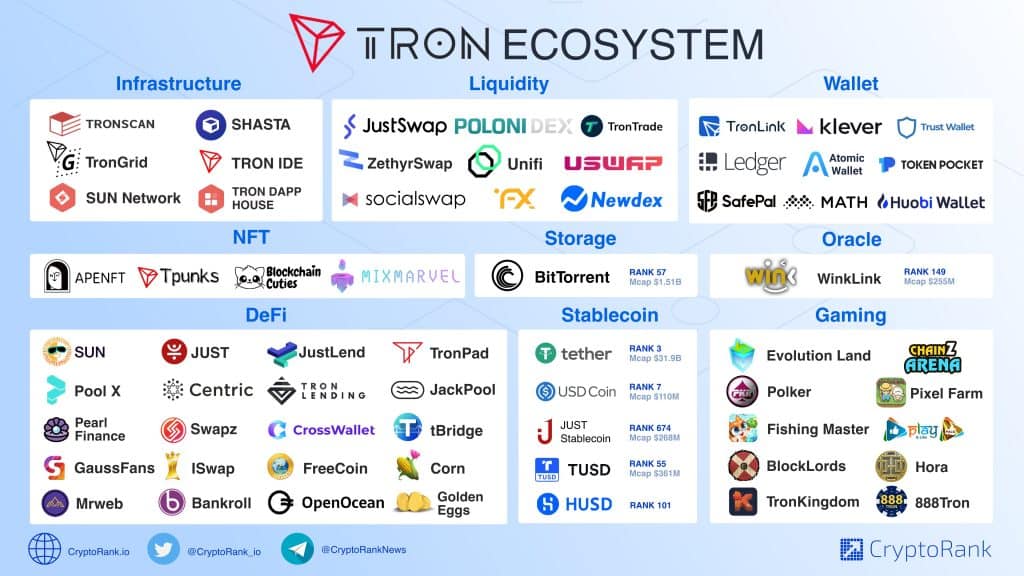
Acquisitions
The TRON network has made three acquisitions so far in its history:
| Date | Platform | Details |
| 2018 | BitTorrent | Tron acquired BitTorrent for $140M, a protocol for peer-to-peer file sharing. At the time of acquisition, BitTorrent had around 170 million users of its products focusing on video and music |
| 2019 | CoinPlay | CoinPlay is the world’s first global blockchain app store |
| 2020 | Steemit | Steemit is a blockchain-based social media platform |
Partnerships
TRON has partnered with electronics giant, Samsung, to become the first blockchain to have a section on the Samsung Galaxy app store. US and European users with a Samsung smartphone can access TRON-based apps. TRON has also announced its first AI partnership with Oraichain. This partnership is designed to attract AI developers into the TRON ecosystem. Oraichain will also add compatibility to OraiBridge for TRC-20 tokens, to allow for seamless transfers between TRON and Oraichain.
Regulatory Scrutiny
Justin Sun, TRON, and the TRX token have come under fire from US regulators. In March 2023, the US Securities and Exchange Commission (SEC) charged Justin Sun, TRON Foundation and BitTorrent Foundation for fraud, selling unregistered securities, and wash trading. These charges are related to the TRX and BTT tokens. Eight celebrities were also charged with illegally promoting TRON tokens. These included Lindsay Lohan, Jake Paul, and Soulja Boy. They were fined a total of $400,000 for their trouble.
Legal Tender
Founder Justin Sun wants TRON’s TRX token to become legal tender in five countries. In October 2022, the Commonwealth of Dominica adopted TRX as legal tender alongside six other TRON-based tokens. Eastern Caribbean nation, St. Maarten, is also looking to potentially follow this same path. As more governments back the TRX token, it will encourage more businesses to accept it as a form of payment. TRON is also working with the Dominica government to develop the country’s digital ID infrastructure.

